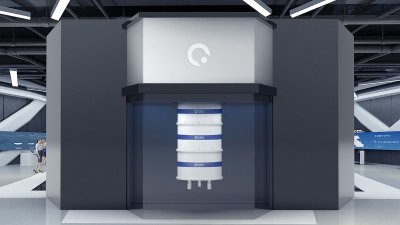China has recently launched two cloud platforms designed to allow the general public to make use of its quantum machines.
One is a feature added to the country’s fastest quantum computer, Zuchongzhi 2. The new cloud platform was launched by the University of Science and Technology of China (USTC) with the support of the Anhui-based QuantumCTek and Beijing Zhongke Arclight Quantum Software Technology.

The other was launched by the Beijing Academy of Quantum Information Sciences (BAQIS), a scientific research unit of the Beijing government. It is known as Quafu – pronounced similarly to Kuafu, a mythological Chinese giant who tries to capture the Sun by running after it, eventually dies of dehydration and is turned into a mountain ranger. To Chinese, his story is a tale of bravery and self-sacrifice.
Chinese scientists say these new cloud platforms can help researchers and students experience the computing power of quantum computers while advancing their own scientific research.
Fan Heng, a researcher at the Chinese Academy of Sciences (CAS) Institute of Physics, said the Quafu cloud system is connected to a 136-qubit quantum computer based in the BAQIS which is similar to the Zuchongzhi 2 but with higher computing power.
Heng said the system is also linked to two other 18 and 10-qubit quantum computers in the laboratory of BAQIS’s Huairou Research Department in Beijing. He said a 18-qubit quantum machine is sometimes preferred over those with higher computing power, which he said can be more error-prone.
“China had missed the golden development period in the era of traditional computing but quantum computers provide us with new opportunities,” Fan said. “The development of quantum cloud platforms is a good starting point for China to build its quantum industry.”
The BAQIS said Quafu will be able to compete with foreign counterparts one day. Currently, key quantum cloud service providers include IBM Q Experience, Google Quantum AI, Xanadu Quantum Cloud and Microsoft’s Azure Quantum.
Superconducting quantum computers
There are three main types of quantum computers:
- electron-based (superconducting),
- atom-based (cold atom or trapped ion) and
- photon-based
In December 2020, a USTC research team led by scientist Pan Jianwei launched Jiuzhang, a photon-based quantum computer that can work at room temperature. It is said to be faster than Google’s Sycamore, a superconducting quantum computer that needs to work at a temperature close to absolute zero.

In May 2021, Pan and his team launched the 66-qubit Zuchongzhi 2, which also uses superconducting chips. While Zuchongzhi 2 is the fastest quantum computer in China, the world’s fastest is the 433-qubit Osprey released by IBM last November.
Zhu Xiaobo, a professor at the USTC, said on May 31 his research team improved the Zuchongzhi 2 by adding control interfaces of 110 coupled qubits with a newly-launched cloud system, allowing users to manipulate up to 176 qubits.
Zhu said the cloud platform aims to reach the advanced global level in key design indicators such as connectivity, fidelity and interference time.
The Chinese public can use the cloud platform to experience simple quantum computer programming and image experiments, said Peng Chengzhi, executive vice director of the project and chairman of QuantumCTek. The platform will be connected to more quantum computers in the future, he said.
About 40% of technology experts believe that electron-based quantum computers will be the most likely to succeed in the next decade, while 35% believe they will be atom-based and 26% photon-based, according to a survey conducted by Arthur D Little, a Brussels-based management consulting firm.
Quantum sanctions
Last October, the Biden administration announced its decision to block quantum computing parts and software exports to China.
In November 2021, the United States Commerce Department’s Bureau of Industry and Security (BIS) sanctioned 28 organizations from China, Russia, Pakistan, Japan and Singapore to prevent the diversion of US technologies to China and Russia for military use.
Some Chinese media said China cannot produce traditional high-end semiconductors due to US sanctions but it can still make superconducting chips. They said China can surpass the West in quantum computing, just like “overtaking others on a bend” in auto racing.
On February 1, China’s Origin Quantum Computing Technology said it had delivered a 24-qubit quantum computer – known as Benyuan Wuyuan. It reportedly uses self-developed superconducting chip technology.

However, some Chinese commentators think it will be difficult for China to bypass US curbs.
A Hunan-based IT columnist says in an article that China has not yet made any major breakthroughs in the development of its indigenous electron beam lithography, an essential tool for making superconducting chips.
He says even if China can produce some superconducting chips, it still needs to import foreign liquid-helium dilution refrigerators to keep its chips at temperatures of absolute zero or less. He says China’s dilution refrigerators are not up to the standard of foreign ones.
Bluefors Oy in Finland, Oxford Instruments NanoScience in the United Kingdom and JanisULT in the US are the three main suppliers of dilution refrigerators with a combined 70% global market share, media reported.
Read: China speeding along in quantum computing race
Read: Rising specter of a quantum computing arms race
Follow Jeff Pao on Twitter at @jeffpao3

